About 16 kilometers north of the St. Lawrence as the proverbial crow flies, and about six times that distance if you follow the rivers and streams inland from the Thousand Islands, is the hamlet of Glen Elbe. It’s about six kilometers east of the village of Athens, on County Road 42, if you’re looking at maps. At Glen Elbe is a farm so deeply steeped in history and so very rich in nature, that its story needs to be told.
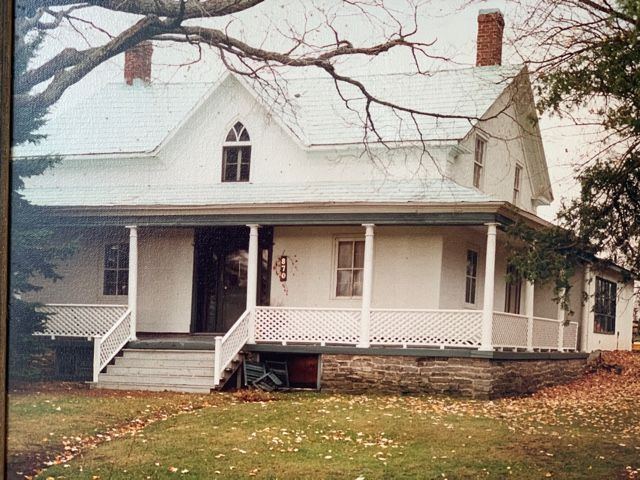
This story is coming to light now, because the Thousand Islands Watershed Land Trust (TIWLT) was gifted the 111 acre farm property in the spring of 2019. Jane Topping, the owner of the farm and a life-long conservationist, wanted the property to come to TIWLT. Jane’s gifting of her farm was a race against time, as she battled cancer. She realized that protecting the land she so dearly loved meant taking a big step. Jane, along with her partner Larry Meikle, invited TIWLT to explore the property. TIWLT quickly realized what a gem the property was – a treasure-chest of history and nature. Sadly, Jane passed just a couple of weeks after she made that extraordinary gift, but she was pleased to see her vision for an eternal conservation of the farm realized.
The Thousand Islands Watershed Land Trust is creating an experience centre to tell the story of this farm. Protecting special forests, wetlands, and habitats is the core business of land trusts. However, in order to protect something, you need to love it; and to love it, you need to understand it.
The Farm at Glen Elbe will translate that chain of thought into action. We’ll restore features as much as possible and practical, and invite you to experience the intricate relationships between people, land use past and present, and wildlife. The experiences begin with creating the centre itself. Gardening, carpentry, stonework, trail work, program design, wildlife studies . . . if you wish, bring your skills and help us to bring this story alive!
The story of the Farm at Glen Elbe begins, and still unfolds, with water. Water is a ribbon that ties history to the land, because water is power. In the earliest days of settlement in North America, the nucleus of so many communities was a waterfall and stream.
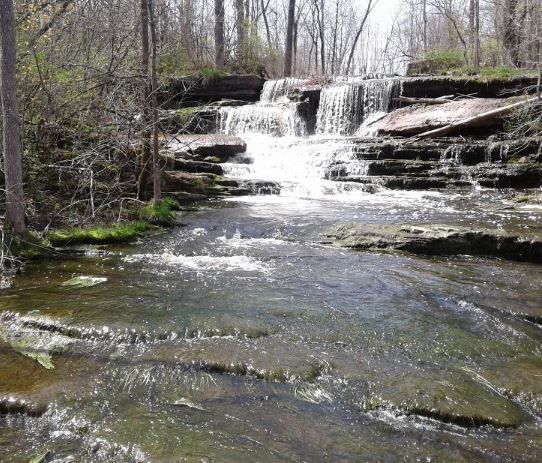
Captain Joseph Jessup was the property’s first owner, granted by Britain as part of his reward for supporting the Crown during the Revolutionary War. Jessup received 800 acres of land in Yonge Township in 1799. But as in so many valued locations, there was settlement activity before patenting of the land. Jessup’s lots were the core of what became Glen Elbe. The key was a six-metre waterfall that made a good mill site; the mill was likely underway before Jessup was granted the land. The first tax assessments for the area in 1805 showed that a sawmill was a going concern. By 1810, there was a gristmill at the falls as well. The mills meant lumber to build houses, barns, and stores; and wheat was ground to support and feed a growing farm community. In their heyday, boarding houses for workers lined a road to the mills, and to another small hamlet, variously named Dickins, Elbe Mills, and Browntown. The stone wall ruins of the mill are moss and tree covered, although the mill pond embankment and apple tree's offspring live on.
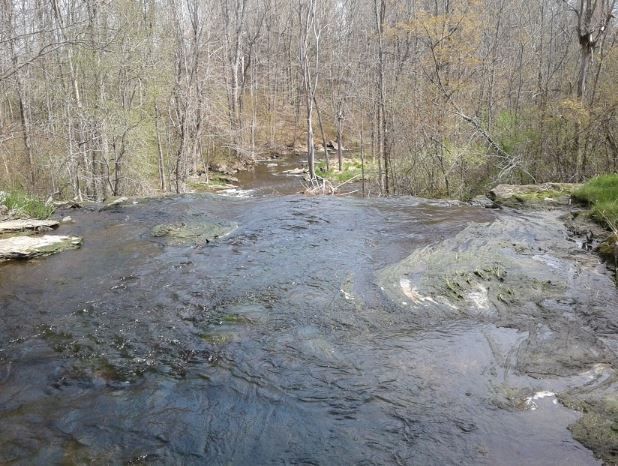
As decades rolled by, the mills were expanded and rebuilt. A small factory made boxes for the cheese maker in the hamlet. A distillery, as found at several other gristmills, was a natural addition – and a local story tells of a gentleman who found his way in one evening and fell into a drunken stupor under the drip of whiskey from a leaky tap. A school was built, No. 2 in the township; a saddle-maker/cobbler set up shop; and John Deming had a store near the mill to round out the wee community. The school was rebuilt a couple of times – the last one-room version is now a house on the edge of the Land Trust property. One of the school’s teachers, Mary Brown, lived in the farmhouse on the TIWLT property. The cobbler worked in an upstairs room at the house, and the bench and some shoe lasts are still there.
The farmhouse was built by Munsell Bates, in or about 1838. The Land Trust is restoring and discreetly updating the old house, which is virtually a time capsule. There was never electrical service in the house, and no plumbing. Those amenities were installed in an addition to the house, built in the early 1970s by Jane and her former husband Bruce. The restoration work is being done by TIWLT board members, volunteers, and local tradespeople. The house was very likely built from timbers and boards made by the first lumber mill at the farm’s waterfalls. The vertical cuts pattern of saw marks date before 1820 when circular saws came along. The hand-hewn and old-growth forest timbers and beams have mortises showing where the beams of an earlier structure joined. And inside an upstairs bedroom wall, behind plaster and lathe, was the store sign of J. Deming – storeowner and a partner in one of earliest of the mills.
The farm at Glen Elbe was on the road (now County Rd 42) from Brockville to Beverly (renamed Delta). In the early days, this was one of the best and busiest roads in the region. It was called a ‘plank road’ because instead of the usual bone-shaking ride of corduroy (log) or earth ruts, it was made smooth using sawn planks. Toll booths helped to pay for the road’s upkeep. In the last half of the 1800s, a barn was built beside the house, and for several years, it was a stagecoach stop and post office. Such stops were common in those days, built every six to ten miles apart, to change horses and where passengers could stretch their legs, sometimes with refreshments available. That old barn still stands, one of the very few of it’s era remaining. It’s badly in need of repairs – another project that the Land Trust will begin this year.
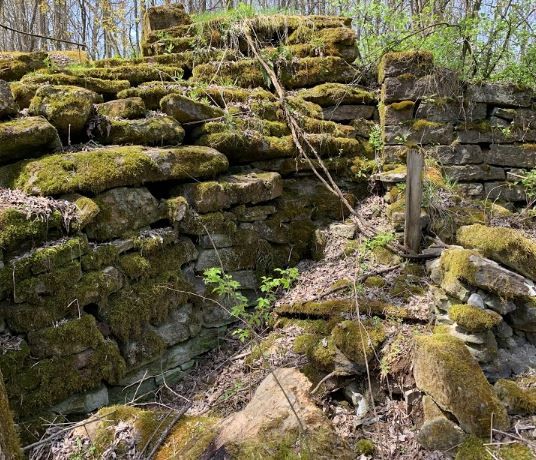
At one time, local rail routes crisscrossed the country-sides. One such was the Brockville & Westport Railway, begun in 1886 and opened in March 1888. The B&W threaded the villages and hamlets together. The B&W railbed, officially abandoned in 1956, crossed the middle of what is now the Land Trust’s Glen Elbe property. There was a station, little more than a glorified shed, near the mills. It was not just a commercial stop though, but also a community hub where children rode the train to Brockville to high school, and where locals rode to towns to shop, and for entertainment and theatres. The raised and overgrown stone railbed, its rails long gone, skirts the forest - marsh edge, and the tracks today are of deer, coyotes, bobcats, otters, and many other animals taking the easy way through the property.
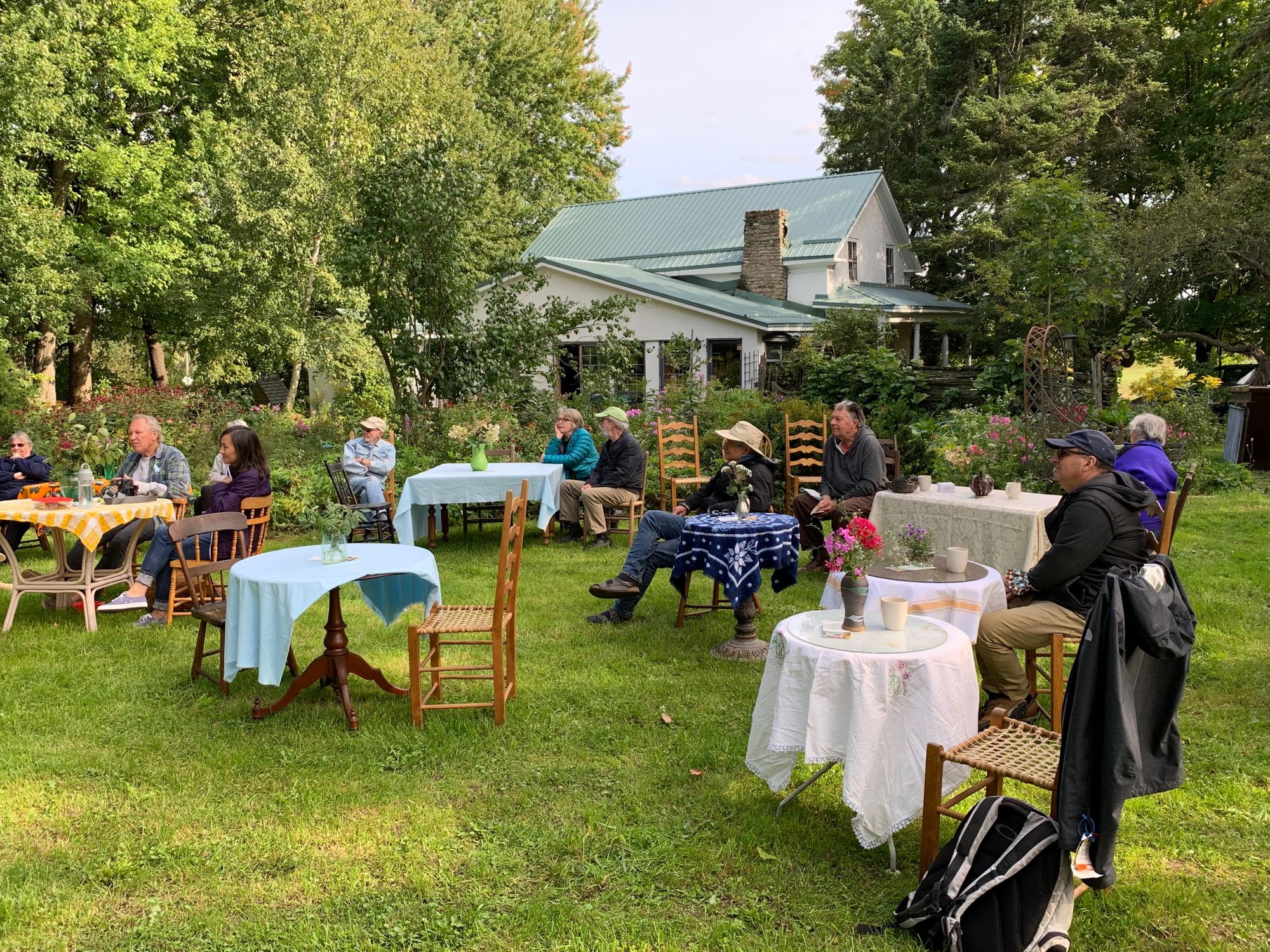
The farm at Glen Elbe has a fantastic wild side. A north third of the property is designated as a Provincially Significant Wetland, because of the significant plants and animals there. Elbe Creek runs into and through the marsh, dramatically exiting the wetland over the waterfall, into a creek that wends its way southwest to another wetland, and then into Charleston Lake. This wetland plays an important role in the quality of water that makes its way to the Thousand Islands. A dozen small creeks upstream run through fields of corn, soybeans, and grain with their sediment, fertilizer, and pesticides. These collect into the wetland, which works like a huge “Britta’ filter to cleanse the water before it goes downstream to lakes and eventually the Thousand Islands.
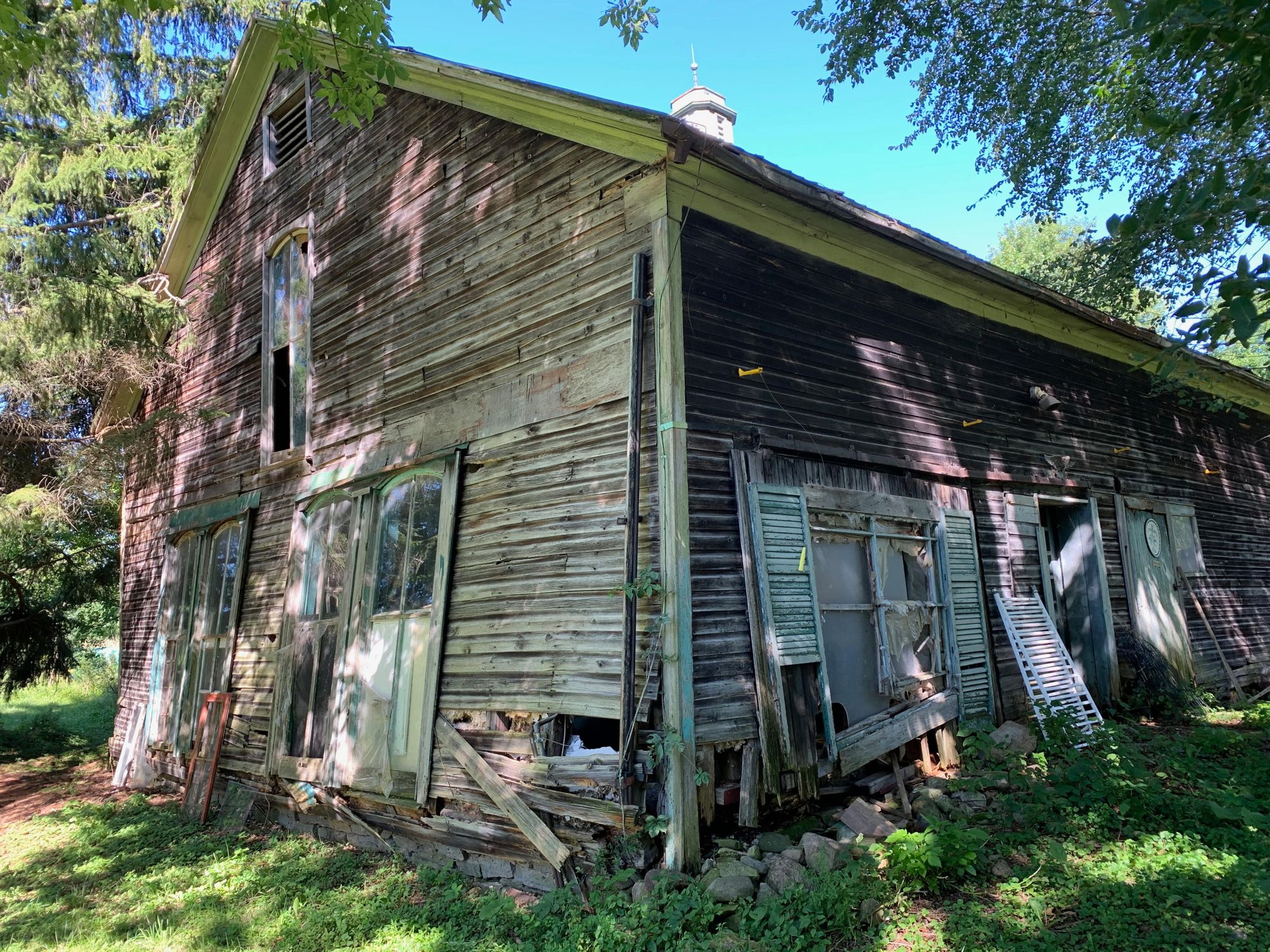
By the mid 1800s, the forests of the region were largely clear-cut. The farm’s forest today and others in the area are from seeds in the soil and saplings then too small for mills or fuel. The lush forest at the farm is, interestingly, a preview of the sorts of forests that we’ll see here in the future. There are several southerly species in the mix, such as black maple and bur oak. This has inspired TIWLT to start a ‘climate change arboretum’ this spring. In an old paddock area near the house, the Trust, with help from the Leeds-Grenville Stewardship Council and volunteers, will plant species of trees and shrubs of hardiness zones once found further south, but now ‘moved’ here. Sassafras, hackberry, big shellbark hickory, and a dozen others will be in the mix.
In addition, this is still a working farm. There are six hayfields that collectively cover about 25% of the farm. Working with a local beef farm family, the hay crop will be tweaked to become grasslands for nesting birds, in particular bobolinks, and eastern meadowlarks. “Windows” – openings in the hedgerows between fields – have been cut to suggest to these birds that the fields are large enough to suit them. These birds already forage here, nesting on adjacent farm pastures. The hedgerows of maples and black cherry, fringed with prickly ash and hawthorns, are brilliant and song-filled with more species of birds.
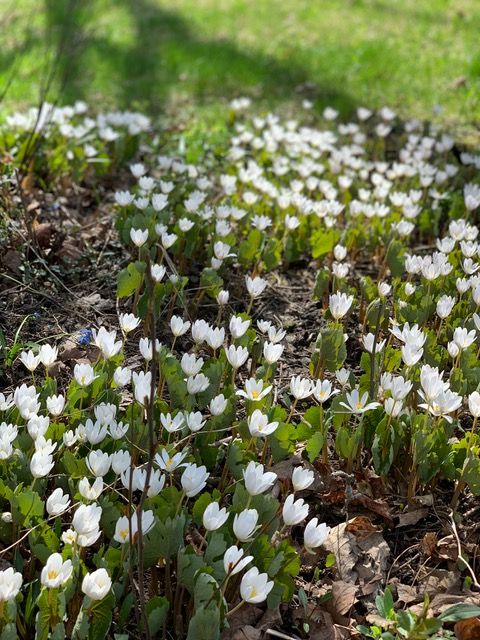
If you were to make a list of the myriad features that make up the southeastern Ontario landscape, you could check a great number of them off that list, at the Farm at Glen Elbe. The centre will become a window into the past, present, and future of a landscape that is in the vital watershed of the Thousand Islands. And if you’d like to pitch in, it will be a window that you can help to open. See tiwlt.ca for more information, or write to us at info@tiwlt.ca.
By Don Ross, Board Member TIWLT.
Editor's Note: There are special places on both sides of the St. Lawrenece River that deserve our attention. It is gratifying that so many volunteers have taken ownership by helping to preserve history and nature. Be sure to check the TIWLT website for locations of areas where you can help.
Posted in: Volume 16, Issue 3, March 2021, Nature, News article, Places
Please click here if you are unable to post your comment.
